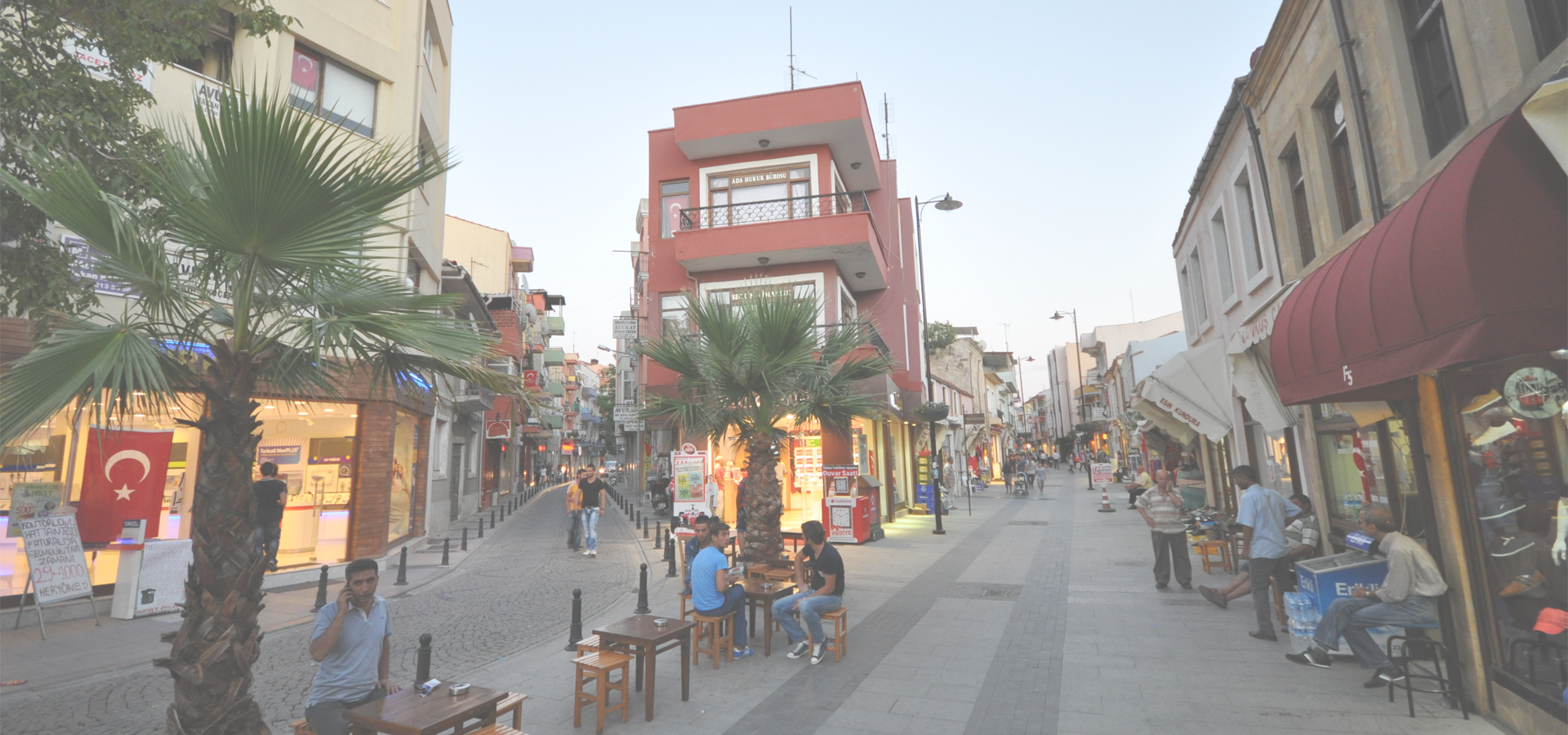🏴 Architect John James Burnet is associated with Gelibolu. In 1923 he was awarded the RIBA Royal Gold Medal.
Gelibolu, Çanakkale Province, Marmara Region, Türkiye
🇹🇷 Gelibolu, also known as Gallipoli (from Greek: Καλλίπολις, Kallipolis, "Beautiful City"), is the name of a town in Çanakkale Province of the Marmara Region, located in Eastern Thrace in the European part of Turkey on the southern shore of the peninsula named after it on the Dardanelles strait, 3 km (1.9 mi) away from Lapseki on the other shore. It is the seat of Gelibolu District. Its population is 31,782 (2021).
History The Macedonian city of Callipolis was founded in the 5th century B.C. It has a rich history as a naval base for various rulers.
The emperor Justinian I fortified Gallipoli and established important military warehouses for corn and wine there, of which some Byzantine ruins can still be seen. After the capture of Constantinople by the Latins in 1204, Gallipoli passed into the power of the Republic of Venice. In 1294 the Genoese defeated a Venetian force in the neighbourhood. The Catalan Company, a body of Almogavars, under Roger de Flor, established themselves here in 1306, and after the death of their leader massacred almost all the citizens; they were vainly besieged by the allied troops of Venice and the Byzantine Empire, and withdrew in 1307, after dismantling the fortifications. After the city's defenses were damaged in an earthquake, it was conquered by Turks in 1354 and became the first stronghold of the Ottoman Empire in Europe. Sultan Bayezid I (1389–1403) built a castle and tower there which can still be seen. In 1416 the Venetians under Pietro Loredan defeated the Turks here. Gallipoli is the site of "tombs of the Thracian kings", which refers to the graves of the Islamic writers Ahmed Bican (died 1466) and his brother Mehmed Bican (died 1451).
Throughout the Ottoman period, the town was the capital of the Sanjak of Gelibolu, and the original centre of the Eyalet of the Kapudan Pasha; between 1864 and 1920 the town belonged to the Edirne Vilayet of the Ottoman Empire. In 1904 the Greek bishopric of Kallipolis was promoted to a metropolis and is listed under the Ecumenical Patriarchate of Constantinople.
From the early 17th century until the early 20th century, a relatively large number of Sephardic Jews lived in Gallipoli, descendants of those fleeing the Spanish Inquisition.
In 1854 the town was occupied by the allied French and British armies during the Crimean War who strengthened the defensive constructions from 1357. Many soldiers died there of cholera and are buried in a local cemetery. The guns of Gallipoli guarded the sea of Marmara until 1878 when more fortifications were built when the Russians threatened to take possession of Constantinople.
The Bulgarian Army threatened Gelibolu during the First Balkan War and advanced to Bolayır in 1912. During the First World War the peninsula and the town were witness to a series of memorable battles (see Gallipoli Campaign). The town was occupied by the Greek army in 1920–1922, and finally returned to Turkey in 1923 under the Treaty of Lausanne. Like the island Imbros off the western shore of the peninsula, Gallipoli had had a majority of Greek inhabitants from ancient times until World War I. It was exempted in article 2 from the Convention Concerning the Exchange of Greek and Turkish Populations (1923), however, the Greek inhabitants were expelled or killed during the Turkish War of Independence. Between 1922 and 1926 the town was a provincial centre and the districts of Gelibolu, Eceabat, Keşan (Enez became part of Keşan before 1953) and Şarköy.
Bishopric A Christian bishopric, a suffragan of Heraclea, the capital and metropolitan see of the Roman province of Europa. Extant documents give the names of three of its bishops of the period before the East–West Schism: Cyrillus, who was at the Council of Ephesus in 431; Harmonius, who took part in a synod that Patriarch Menas of Constantinople held in 536 to condemn the Miaphysite Patriarch Anthimus I of Constantinople; Melchisedec, who participated in the Second Council of Nicaea (787).
The bishopric continued to be a see of the Greek Orthodox Church until after the 1923 population exchange between Greece and Turkey. Le Quien mentions three of those bishops who lived in the 14th and 15th centuries. Beginning in the early 13th century, there were also Latin Church bishops of Callipolis.
No longer a residential bishopric, Callipolis is today listed by the Catholic Church as a titular see.
Gelibolu today Gelibolu is now an administrative centre in the province of Çanakkale. The mayor is Münir Mustafa Özacar (CHP). Gelibolu is well known for sardine canning.
Europe/Istanbul/Canakkale_Province

Gelibolu has a population of over 31,782 people. Gelibolu also forms one of the centres of the wider Çanakkale Province which has a population of over 540,662 people.
To set up a UBI Lab for Gelibolu see: https://www.ubilabnetwork.org Twitter: https://twitter.com/UBILabNetwork
🇺🇸 Harrisburg 40.363
🇿🇦 Odendaalsrus 26.67
🇿🇦 Klerksdorp 26.665
🇿🇦 Bothaville 26.617
🇧🇬 Targovishte 26.583
🇺🇦 Kamianets-Podilskyi 26.581
🇱🇻 Daugavpils 26.542
Locations Near: Gelibolu 26.6667,40.4
🇹🇷 Çanakkale 26.4,40.15 d: 35.8
🇹🇷 Edremit 27.02,39.592 d: 94.7
🇬🇷 Alexandroupoli 25.883,40.858 d: 83.4
🇬🇷 Alexandroupolis 25.867,40.85 d: 84
🇹🇷 Burhaniye 26.95,39.5 d: 102.9
🇹🇷 Tekirdağ 27.515,40.979 d: 96.2
🇹🇷 Edirne 26.563,41.684 d: 143
Antipodal to: Gelibolu -153.333,-40.4
🇵🇫 Papeete -149.566,-17.537 d: 17447.3
🇹🇴 Nuku'alofa -175.216,-21.136 d: 17038.5
🇦🇸 Pago Pago -170.701,-14.279 d: 16656.3
🇼🇸 Apia -171.76,-13.833 d: 16559.8
🇺🇸 Hilo -155.089,19.725 d: 13327
🇺🇸 Maui -156.446,20.72 d: 13211.2
🇺🇸 Maui County -156.617,20.868 d: 13193.9
🇺🇸 Kahului -156.466,20.891 d: 13192.1